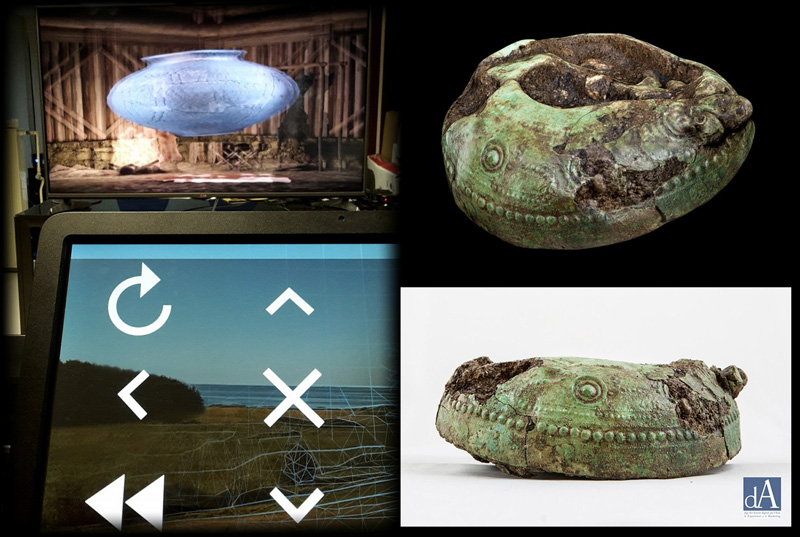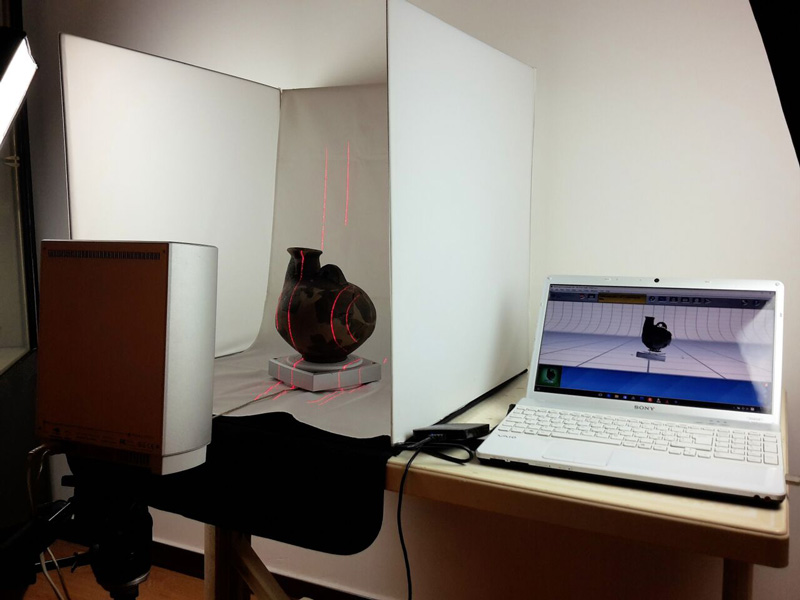A construction company, after hearing about us through the web, requested a meeting, during which, it presented us with the specifications of a project to be implemented and informed us of its requirements in terms of timeframe and costs for its completion.
These requirements included the realisation of a hardware and software system, suitable for
displaying multimedia content (text, photos, audio, video and three-dimensional models) in Augmented Reality mode and with 3D stereoscopic vision.
The key elements of the assignment were:
Ease of use of the software by the visitor;
High quality of the documentation and artefact digitisation;
Optimisation of hardware resources;
Minimising maintenance and human intervention on the machines;
Cutting costs without affecting performance.
The solution was found by optimising the hardware, choosing that which, while offering the same resources, was able to process the most data: fanless PCs with a high
performance-energy savings ratio, so much so that they do not require cooling fans, and are small in size. The designed system involved the use of different platforms (Windows and Android), in communication with each other in the same application. The graphic interface also took into account solutions suitable for the visually impaired, with high-contrast large size characters.

The entire content display system is controlled by a console, which integrates a 22-inch touchscreen monitor, and a micro PC running the Android operating system. The choice of the Android operating system was made with a view to future uses of the same system, natively compatible with mobile systems. Each function, such as stereoscopic 3D viewing, Augmented Reality, the choice of video content and the detailed information texts, is directly selected on the console by the visitor, and displayed by the large, 55-inch diagonal screen, compatible with stereoscopic 3D viewing. The choice of display fell on screens which provided utmost efficiency and quality in stereoscopic 3D vision. Particular attention was paid to the compatibility between the 3D eyeglasses and the 3D screen, necessary for binocular vision which, because they had to be supplied in large numbers to visitors, had to be inexpensive.

The scientific part of the digi.Art project was supervised by Dr Rosanna Pesce. The archaeological finds were surveyed with laser scanners, and a high-resolution photographic campaign. The digital three-dimensional models obtained were optimised, maintaining high viewing quality, but reducing the number of polygons and thus the file size. The interface system, between the Android console and the Windows PC which controls the 3D screen, was specially developed by the digi.Art programmers. The three-dimensional, animated environments, also visible in stereometry, were developed in the Unity environment. The user interface was designed and made according to the principles of ergonomics, so that the actions to be performed could be immediately understood – in other words, a user-friendly interface.

